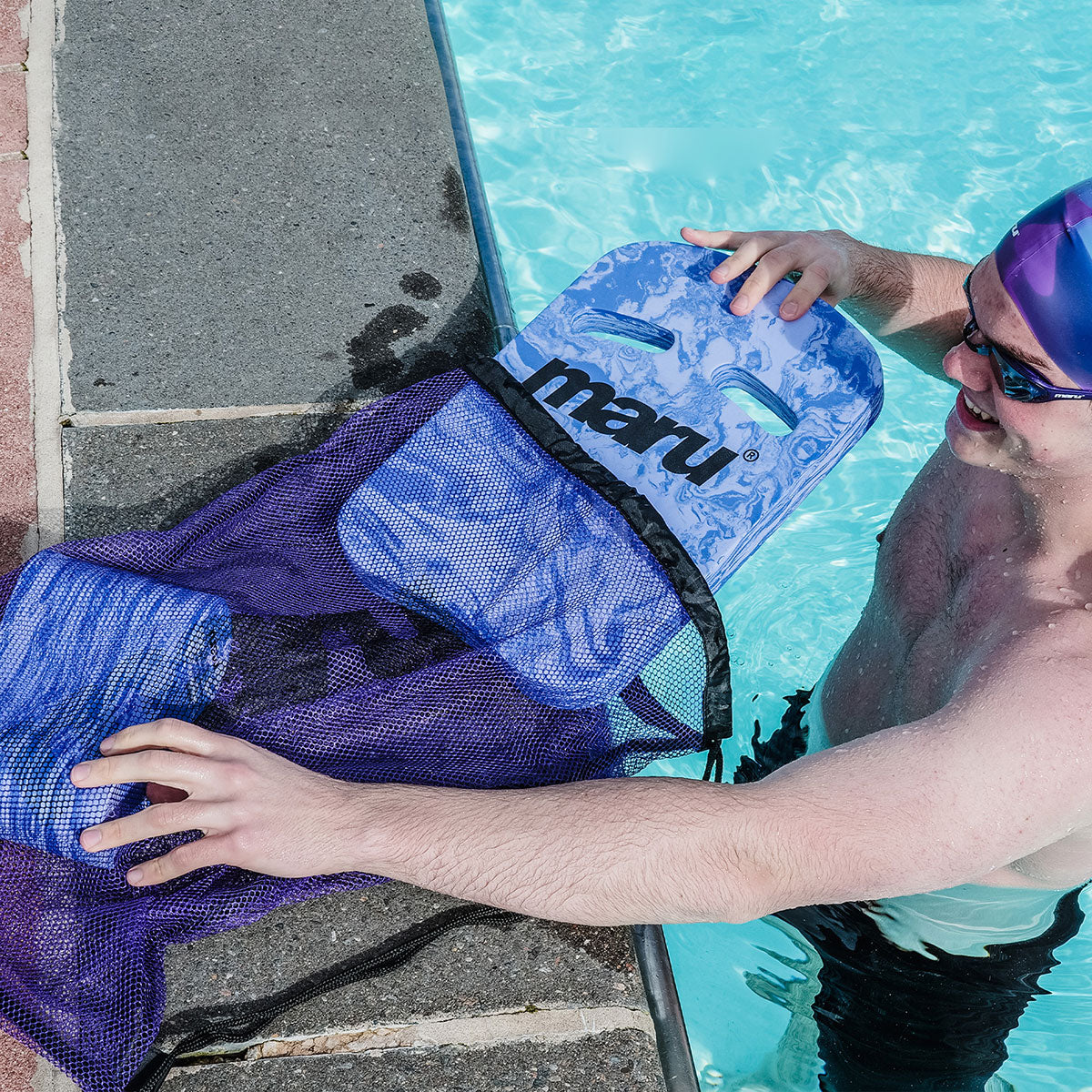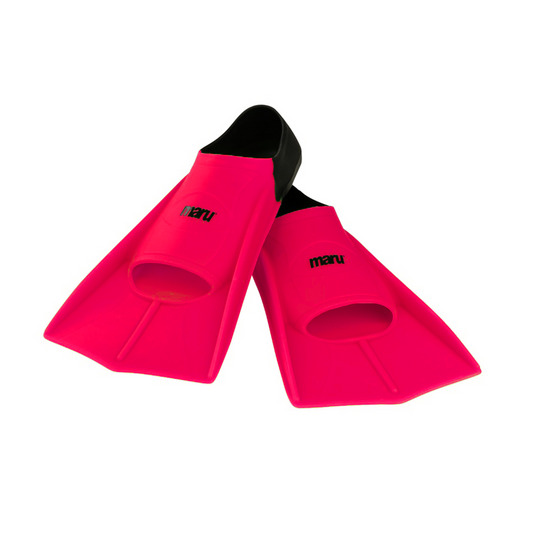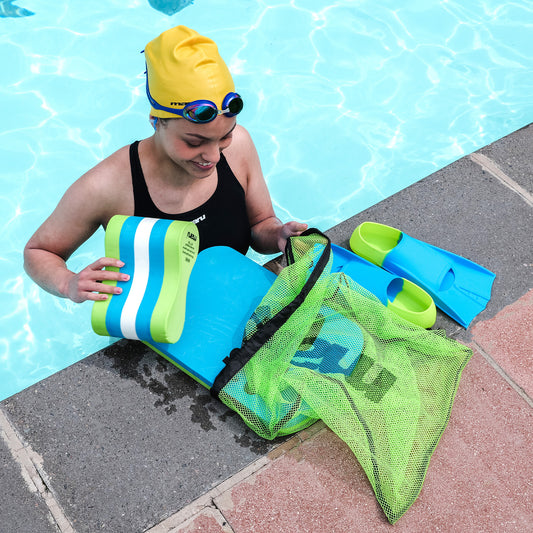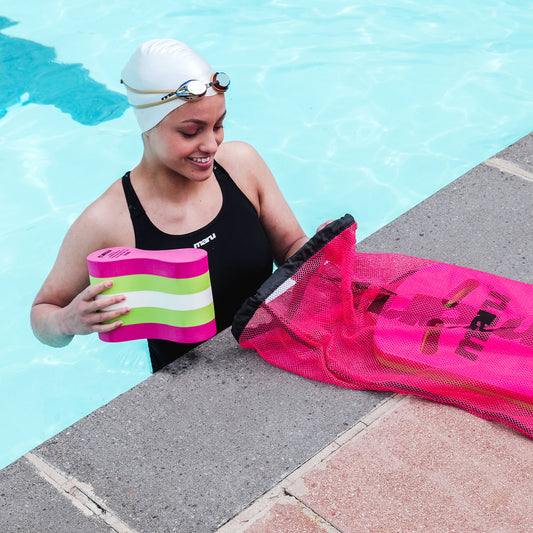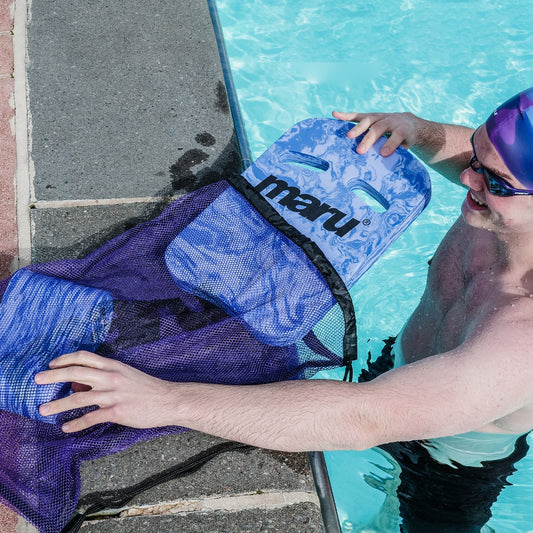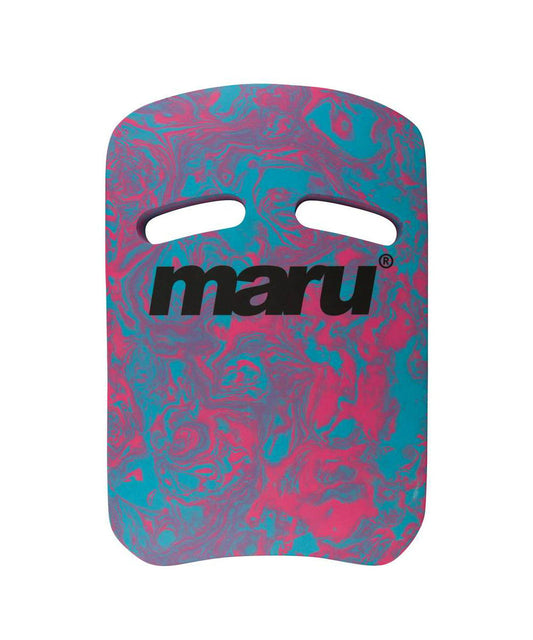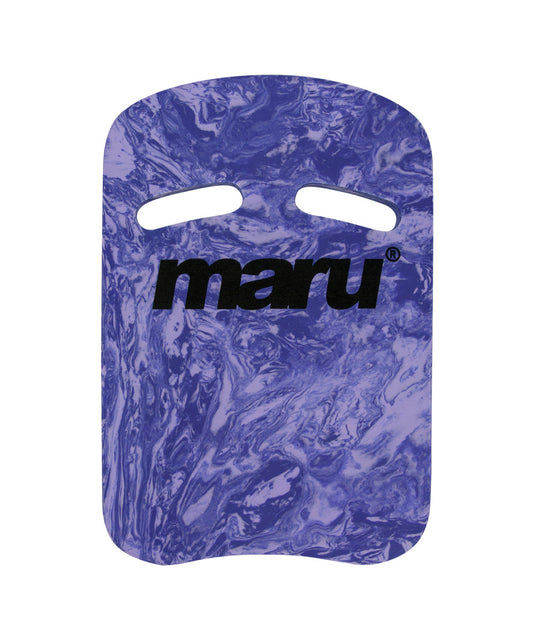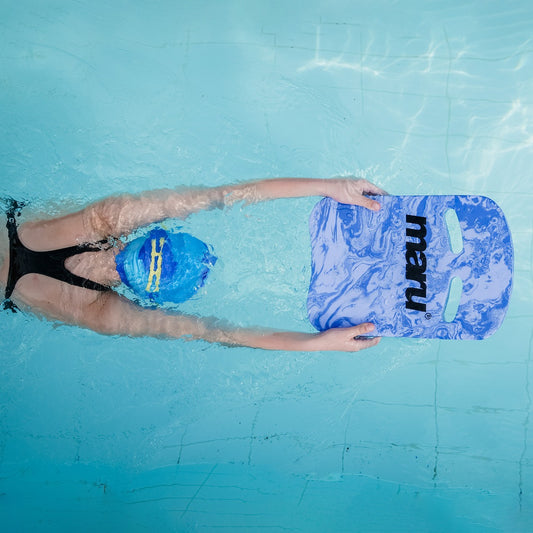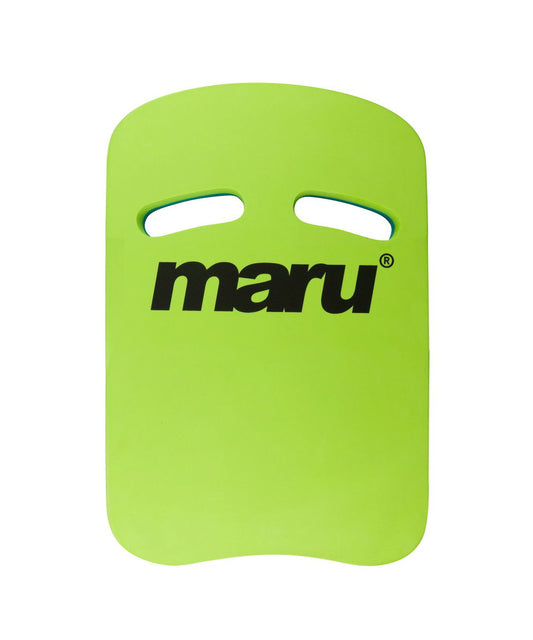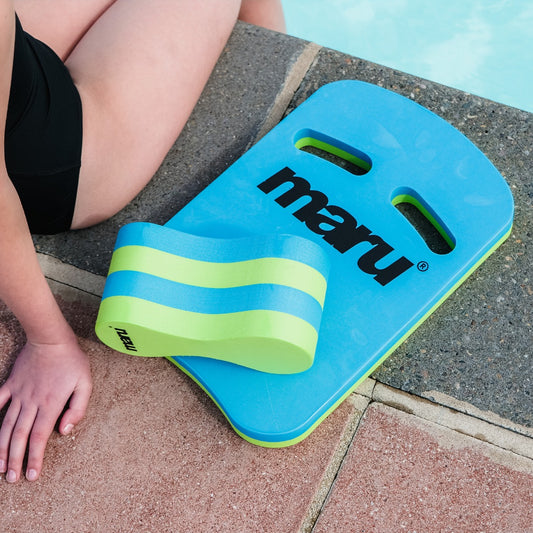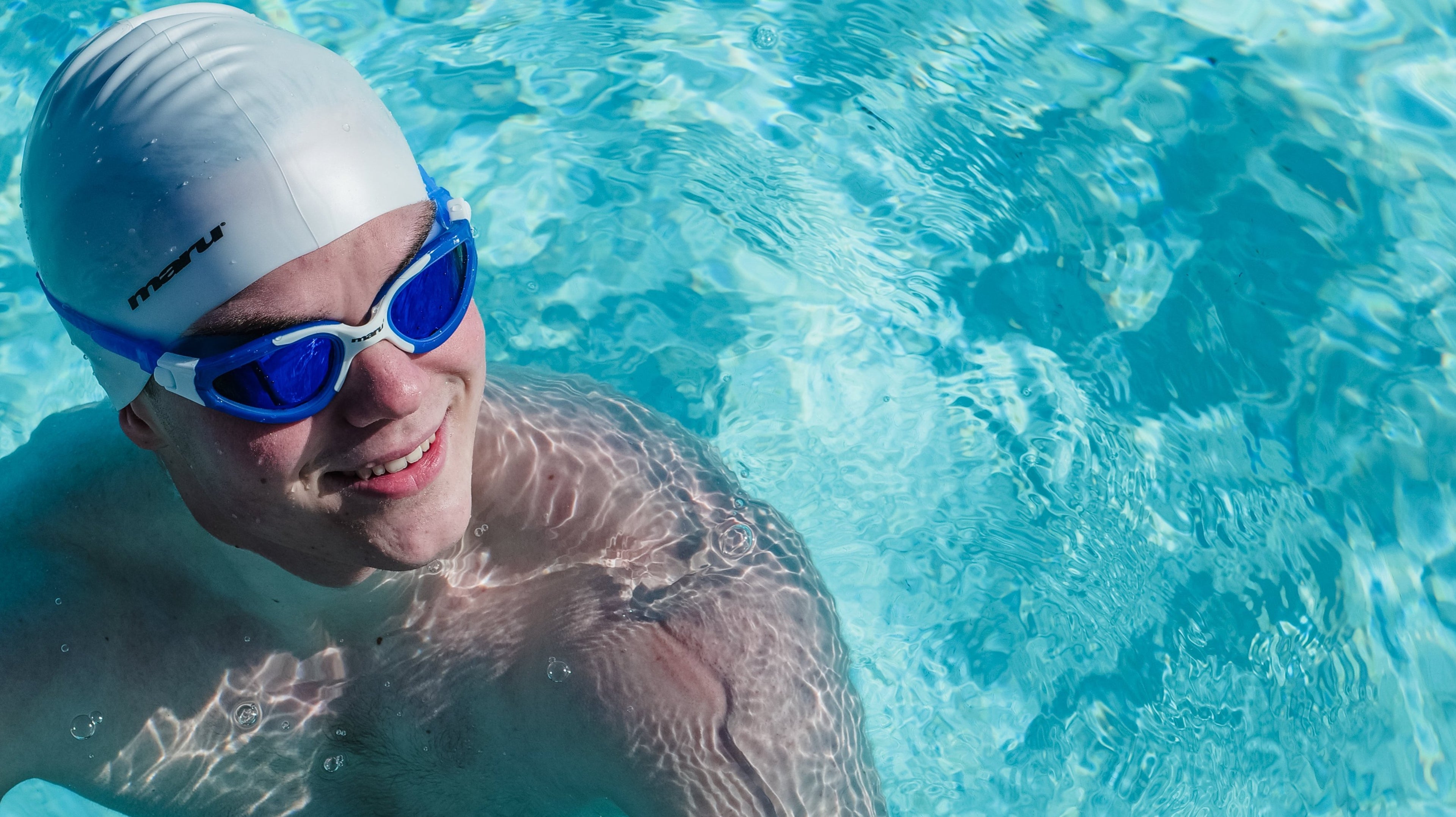
The Swim Training Equipment Recommended By Coaches
For beginners to competing swimmers, we provide the Swim Training Equipment you need to improve your lap times, body strength and confidence in the pool
Shop Swim Training Accessories
-
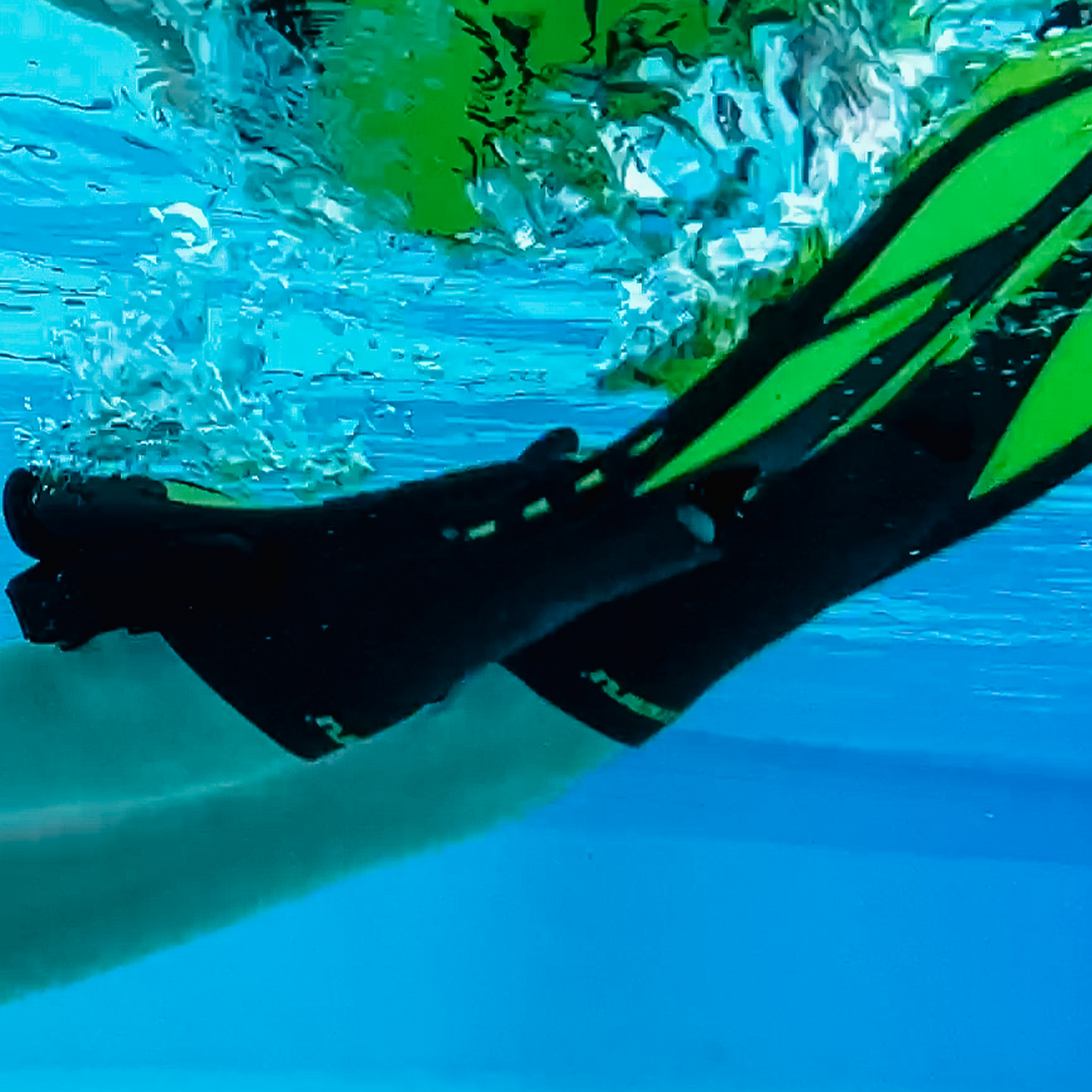
Swim Training Fins & Flippers
Welcome to Maru, your first choice for high-performance swimming, diving, and training...
-

Swim Pull Buoys
Our pull buoys are designed to help swimmers of all levels refine...
-
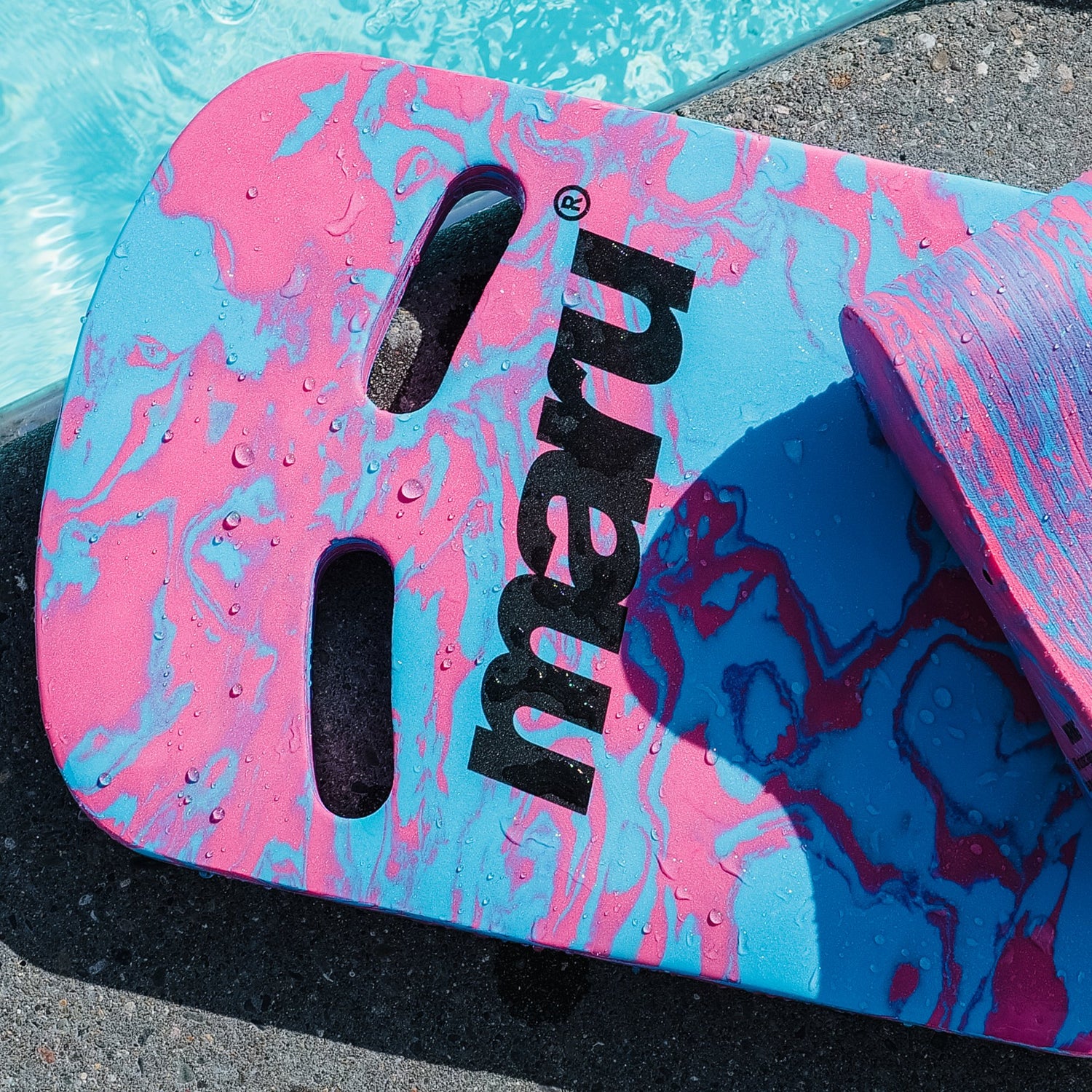
Swimming Kickboards
Welcome to Maru, your go-to destination for high-quality swimming kickboards designed to...
-

Swim Goggles
Welcome to Maru, your ultimate source for high-quality swimming goggles designed for...
-
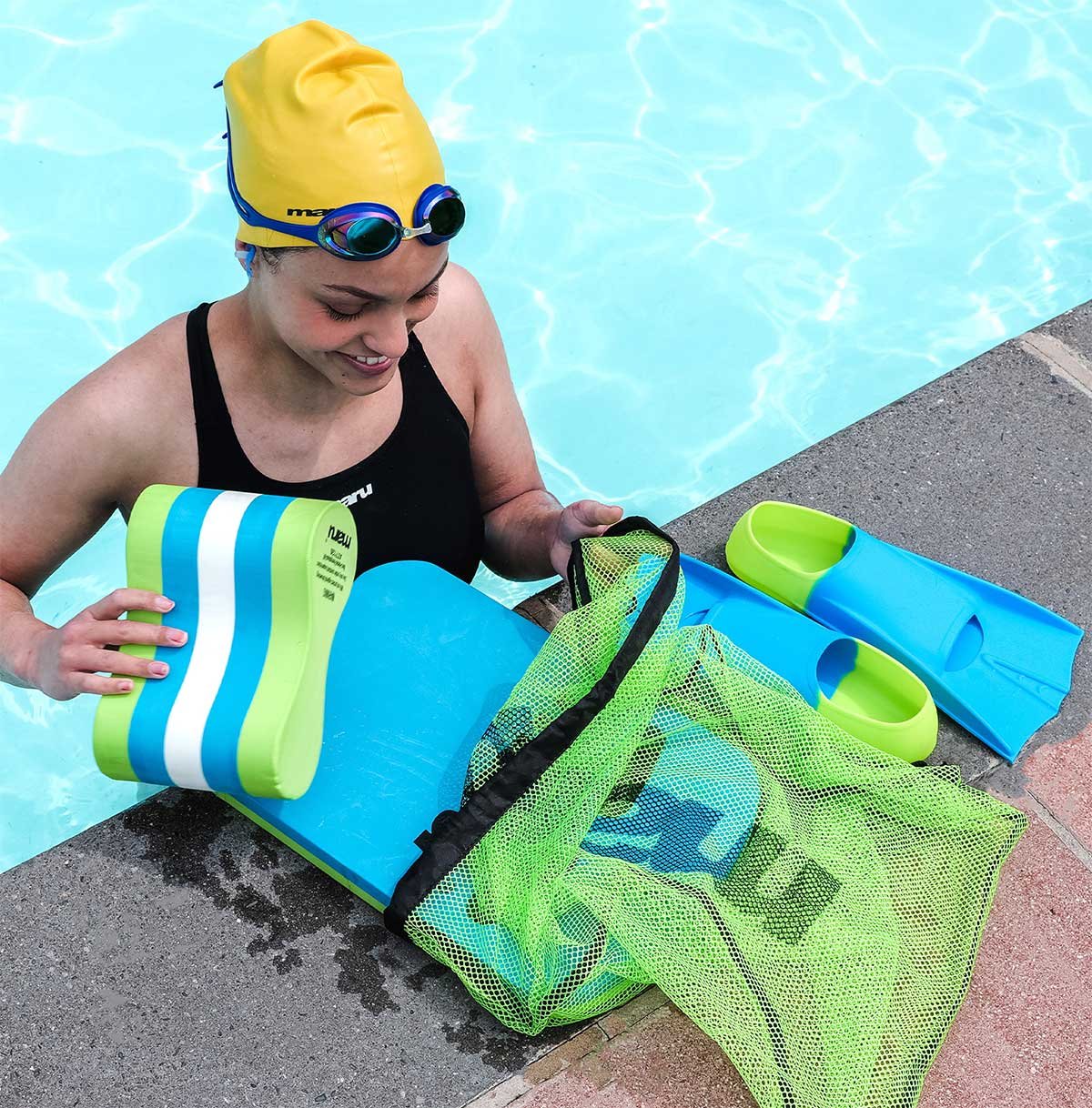
Swim Training Bundles
For a limited time only, shop from our range of swim training...
Swimmers shop for...
-
Maru Swim Training Fins - Pink/Black
Regular price £25.99Regular priceUnit price / per -
Maru Swim Training Fins - Neon Lime/Black
Regular price £25.99Regular priceUnit price / per -
Mesh Bag For Swim Equipment - Lime
Regular price £9.49Regular priceUnit price / per -
Mesh Bag For Swim Equipment - Pink
Regular price £9.49Regular priceUnit price / per -
Mesh Bag For Swim Equipment - Purple
Regular price £9.49Regular priceUnit price / per -
Maru Swim Kickboard - Blue and Pink Swirl
Regular price £15.99Regular priceUnit price / per -
Maru Swim Kickboard - Dark Purple and Purple Swirl
Regular price £15.99Regular priceUnit price / per -
Maru Swim Kickboard - Blue and Lime
Regular price £15.49Regular priceUnit price / per
Swimming Tips & Advice
View all-

Preparing for My Next Competition in the 200m F...
The meet is three weeks away and I can already feel it. That flutter in my stomach when I picture myself standing behind the blocks. The 200m freestyle has been circled on my calendar for months, and suddenly it feels very real. My lane mates keep asking if I'm nervous. The honest answer? Yes, but in the best way. If you're reading this the night before a race or in the middle of a restless race week, I see you. The 200 free is a beautiful, brutal event that asks for speed, endurance, and courage all at once. I want to share what's helped me move from anxious energy to confident readiness, the small routines, the mindset shifts, and the race-week habits that make standing on those blocks feel less terrifying and more like something I'm genuinely prepared for. How do I prepare for a 200m freestyle? Preparation for a big race isn't just about the physical training. It's also about showing up consistently, sharpening your confidence in the final stretch, and arriving on race day feeling fresh rather than frayed. Trust your training. This is the foundation. Those early mornings when you dragged yourself to the pool, the sessions when you pushed through fatigue, the steady rhythm of showing up four to six times a week, that's your preparation. Is swimming 30 minutes a day enough exercise? Absolutely, especially when it's consistent. Your body knows what to do. You've already built the fitness you need. Sharpen, don't reinvent. In the weeks leading up to the meet, this isn't the time to try a completely new training approach or suddenly double your yardage. Instead, you're refining what you've built. A few intentional sessions where you practice swimming with purpose and controlled speed will do more for your confidence than grinding yourself into exhaustion. Arrive fresh. Rest is training too. In fact, it might be the most important part of race prep that we often overlook. Feeling prepared means feeling energised, and that requires protecting your recovery in those final days. When I think about what "prepared" actually feels like, it's not about being perfect. It's about standing behind the blocks knowing I've done the work, I've taken care of myself, and whatever happens in the next two minutes, I'm ready to find out what I'm capable of today. Is it normal to feel nervous before a swim meet? Absolutely, and if anyone tells you they never get nervous, they're either lying or they're not pushing themselves hard enough. The 200m freestyle has a special way of making even experienced swimmers anxious, and there's a good reason for that. The 200 free sits in that uncomfortable middle ground. It's too long to just sprint through on pure adrenaline, but it's short enough that every choice matters. Go out too hard and you'll be hanging on for dear life in that final 50. Go out too cautiously and you'll never make up the time. It's fast and it hurts, and there's nowhere to hide. Common worries I hear from club swimmers all the time: "What if I go out too hard and completely die?" "What if I'm too conservative and finish wishing I'd been braver?" "What if people are watching and I look terrible in that last length?" "What if I just... forget how to swim when the starter says 'take your marks'?" Here's what I've learned: nerves are energy. That flutter in your stomach, that racing heart rate when you think about the race, that's not weakness. That's your body getting ready to do something challenging and meaningful. The goal isn't to eliminate nerves; it's to channel them into focused, purposeful swimming. I used to interpret nervousness as a sign I wasn't ready. Now I see it differently. If I wasn't nervous, it would mean this race didn't matter to me. The butterflies are proof that I care, that I've set a goal that stretches me, and that I'm about to test myself in a way that feels significant. That's something to embrace, not fight against. How can I calm my nerves before racing? While we can't eliminate pre-race anxiety completely (nor should we want to), we can develop simple routines that help us feel more grounded and in control when those nerves peak. Find a breathing reset. In the minutes before you step up to the blocks, take three slow, deep breaths. Breathe in through your nose for a count of four, hold for a moment, then exhale fully through your mouth. This isn't about achieving some zen statem, it's about reminding your nervous system that you're safe and in control. You'd be surprised how much calmer you feel after just a few intentional breaths. Choose an anchor phrase. I use "trust the pace" as my mantra. Some swimmers prefer "hold the water," "relaxed power," or "one stroke at a time." Find something short that reminds you of how you swim best, and repeat it quietly to yourself when the anxiety spikes. It gives your mind something to focus on besides the million things that could go wrong. Focus on process, not outcome. Instead of obsessing over what time you might swim, shift your attention to how you want to execute the race. Think about your first 25 feeling controlled, your breathing staying rhythmic, your catch staying strong even when you're tired. These are things within your control, and focusing on them quiets the anxious voice that wants to catastrophise about results. Visualise success, but keep it simple. Close your eyes and picture yourself diving in, taking those first few strokes, and settling into a rhythm that feels powerful but sustainable. Don't try to visualise the entire race perfectly, just see yourself starting well, moving with confidence, and feeling strong in your body. The more familiar the feeling becomes in your mind, the more accessible it is in reality. What should I do the week before a swim race? Race week isn't about cramming in extra training or proving your fitness. It's about reducing chaos and increasing confidence. Here's how I approach it: Keep sessions familiar. This isn't the week to try a completely new set or dramatically change your routine. Stick with what your body knows. Trust the patterns you've established over months of training. Practice "race mood" moments. Include a few short, strong efforts in your training, but follow them with plenty of rest. The goal isn't to exhaust yourself, it's to remind your body what speed feels like and to practise being comfortable with discomfort for brief periods. These moments build confidence without depleting you. Protect your sleep. This might be the single most important thing you can do. Aim for consistent bedtimes and give yourself permission to prioritise rest over social commitments or late-night scrolling. If you're normally a seven-hour sleeper, try for eight. Your body needs time to recover and consolidate all that training. Don't test new gear. Keep using the goggles, cap, and suit you're familiar with. The pool on race day will provide enough novelty without adding equipment surprises. Manage life stress where possible. I know we can't pause our entire lives for a swim meet, but where you have control, try to keep the week calmer. Say no to a few extra commitments. Give yourself buffer time for getting places. Small reductions in daily stress compound into a much steadier nervous system by race day. What should I eat before a 200m freestyle race? Nutrition doesn't need to be complicated, but it does need to be intentional and familiar. The golden rule: don't experiment on race day. The day before your race, focus on easily digestible carbohydrates paired with some lean protein. Pasta, rice, bread, potatoes, these are your friends. Add some chicken, fish, or plant-based protein if that sits well with you. Avoid anything overly spicy, rich, or unfamiliar. This is not the time to try that new restaurant everyone's been recommending. Race morning should include a solid meal a few hours before you swim. Something like porridge with banana, toast with peanut butter and honey, or a bagel with cream cheese gives you sustained energy without sitting heavily in your stomach. If your race is early and you can't face a full meal, a light snack like a banana, an energy bar, or some toast still provides fuel. Timing matters. Aim to finish your main meal about two to three hours before you expect to race. If you're swimming later in the meet, bring light snacks, bananas, energy bars, crackers, to keep your energy steady without feeling overfull. Listen to your body's hunger cues, but don't wait until you're ravenous or lightheaded. Stay hydrated, but don't overdo it in the hour before racing. Sip water consistently throughout the day leading up to your event. If you're nervous and forgetting to drink, set reminders. Being well-hydrated helps everything from your muscle function to your focus. What to avoid: Don't suddenly change your eating patterns because you read something online. Don't skip breakfast because you're nervous. Don't load up on sugary foods thinking you need "quick energy", they'll spike your blood sugar and potentially make you feel worse. Stick with what you know works for training days. What is a good warm-up for a 200m freestyle? A quality warm-up isn't about logging a specific distance or hitting certain send-offs. It's about arriving at the blocks feeling loose, sharp, and ready not tired. Start gently. Get your heart rate up gradually with some easy swimming. This could be a mix of freestyle and other strokes, whatever feels natural to your body. The goal is to transition from standing around to moving smoothly through the water. Loosen key areas. Spend time on the movements that will matter in your race. Rotate your shoulders through their full range of motion. Work on hip flexibility with some gentle kicking. Get your breathing pattern established so it doesn't feel jarring when you race. Include short wake-ups. Build in a few brief efforts at or near race pace maybe a 25 or 50 where you increase to race speed and feel your body respond. These aren't about exhausting yourself; they're about reminding your nervous system what speed feels like so it doesn't come as a shock when the gun goes off. Rest fully between these efforts. Finish feeling sharp, not tired. End your warm-up with some easy swimming or gentle stretching. You should feel pleasantly warm, loose, and alert, not breathless or fatigued. If you're feeling exhausted after your warm-up, you've done too much. The best warm-up is one that feels familiar. If you can, replicate elements of what you do before hard efforts in training. Your body will recognise the routine and settle into performance mode more easily. What should I focus on during the race? When you're in the middle of a 200m freestyle, overthinking is your enemy. Instead of trying to monitor every technical detail or calculate splits, trust simple cues that help you swim well when your brain is flooded with adrenaline and effort. First 50: Controlled speed, relaxed face and neck. This is where races are often lost. The temptation is to explode off the blocks and sprint like it's a 50. Resist that urge. Dive in with purpose, settle into a rhythm that feels strong but sustainable, and actively relax your jaw and shoulders. If your neck and face are tense, you're burning energy you'll need later. Think "smooth power" rather than "all-out attack." Middle 100: Keep your length, steady your kick. This is the section where technique can start to deteriorate if you're not mindful. Focus on holding your stroke length, fully extending each reach, completing each pull. Keep your kick steady and rhythmic even as your legs start to protest. If you shorten up and start churning, you'll work harder for less speed. Long, connected strokes will carry you through more efficiently than frantic thrashing. Final 50: Brave effort and hold form when it stings. This is where the race really happens. Everything will hurt. Your lungs will burn, your arms will feel heavy, and your brain will suggest several excellent reasons why you should ease off just a little. This is the moment you've been training for. Hold your form even when it's excruciating. Keep your head down, maintain your rotation, and commit to every stroke until you touch the wall. The swimmers who medal are often the ones who suffer just slightly more willingly than everyone else in that last length. What does it feel like when you're doing it right? You'll feel challenged but not panicked. Your breathing will be hard but rhythmic. Your body will hurt, but you'll still recognise the movements as your own swimming, just at a level of intensity that demands everything you have. What do I do after the race? The moment you touch the wall, whatever time is on the board, you've done something significant. You've faced nerves, pushed your body, and completed a race that many people would never have the courage to attempt. Cool down gently. Swim a few easy lengths to help your heart rate come down and flush out some of the metabolic waste from the hard effort. Don't skip this even if you're disappointed with your result or desperate to check your splits. Taking care of your body in those first minutes post-race helps recovery and gives you time to process what just happened. What to tell yourself: Regardless of whether you achieved your goal time, you showed up. You did something brave. Every race, even the disappointing ones, teaches you something about your swimming, your mindset, or your preparation. Ask yourself: What felt good? What would I do differently next time? What surprised me? These questions are more useful than just fixating on the clock. Celebrate showing up. Club swimming at any level requires dedication that most people can't fathom. Those early mornings, the chlorine-scented hair, the aching muscles, the choice to prioritise training over easier options, all of it matters. Whether you crushed your goal or fell short, you're a swimmer who races. That's worth acknowledging. Once you're home and recovered, take some time to care for your swim gear properly. Rinse everything well, let it dry completely, and pack it away knowing you've got another race in your future whenever you're ready. You're More Ready Than You Think Standing behind the blocks before a 200m freestyle will probably always feel a bit nerve-wracking, and honestly, that's how it should be. But preparation isn't about eliminating fear it's about building confidence that you can handle whatever the race brings. Trust your training. Keep your race week simple and familiar. Fuel your body with foods you know work. Warm up in a way that feels like yours. When you dive in, focus on the feel of good swimming rather than perfection. And when you touch the wall, no matter what, acknowledge that you did the thing. The gear you trust removes one more stressor from race day. When you know your goggles won't leak and your cap fits securely, you're free to focus on what really matters: swimming with courage and purpose. See you at the blocks. You've got this. About the Author: Sarah Mitchell is a swimmer who competes regularly in club meets across the UK. When she's not in the pool four to six mornings a week, she writes about the real experiences of club swimmers, the nerves, the small victories, and the joy of chasing personal bests alongside supportive lane mates.
Preparing for My Next Competition in the 200m Freestyle
The meet is three weeks away and I can already feel it. That flutter in my stomach when I picture myself standing behind the blocks. The 200m freestyle has been...
-

What Are the 6 Essential Swimming Skills? A Beg...
Get confident in the water faster with the six essential swimming skills every beginner needs. From breathing control to body position and coordination, discover the simple steps that transform anxious starters into smooth, controlled swimmers.
What Are the 6 Essential Swimming Skills? A Beginner's Guide from a Swim Coach
Get confident in the water faster with the six essential swimming skills every beginner needs. From breathing control to body position and coordination, discover the simple steps that transform anxious...
-

Is Swimming 30 Minutes a Day Enough Exercise?
Wondering if 30 minutes of swimming is enough for fitness? Learn what health benefits you can expect, how swimming builds muscle tone versus endurance, and get the truth about common swimming fitness myths.
Is Swimming 30 Minutes a Day Enough Exercise?
Wondering if 30 minutes of swimming is enough for fitness? Learn what health benefits you can expect, how swimming builds muscle tone versus endurance, and get the truth about common...
-

Swim Fins, Hand Paddles, and Pull Buoys - What'...
Every swimmer reaches that point where they want to swim further, faster, or just feel smoother in the water. Training aids like fins, paddles, and pull buoys help you get there each one improving a specific part of your stroke. Coach Sam explains what each tool does, how to use them properly, and which one might be right for your swim goals.
Swim Fins, Hand Paddles, and Pull Buoys - What's the Difference?
Every swimmer reaches that point where they want to swim further, faster, or just feel smoother in the water. Training aids like fins, paddles, and pull buoys help you get...







